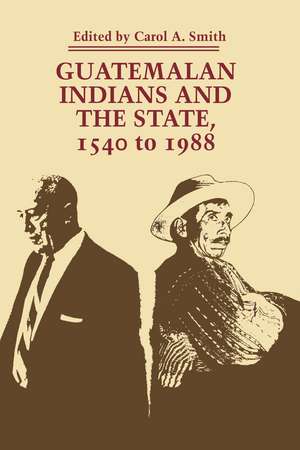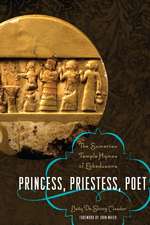Guatemalan Indians and the State: 1540 to 1988: LLILAS Symposia on Latin America Series
Editat de Carol A. Smithen Limba Engleză Paperback – mar 1993
This historical insight into the forces that shaped modern Guatemala provides a context for understanding the extraordinary level of violence that enveloped the Indians of the western highlands in the 1980s, the continued massive assault on traditional religious and secular culture, the movement from a militarized state to a militarized civil society, and the major transformations taking place in Guatemala’s traditional export-oriented economy. In this sense, Guatemalan Indians and the State, 1540 to 1988 provides a revisionist social history of Guatemala.
Preț: 262.40 lei
Nou
Puncte Express: 394
Preț estimativ în valută:
50.21€ • 52.56$ • 41.55£
50.21€ • 52.56$ • 41.55£
Carte tipărită la comandă
Livrare economică 05-19 aprilie
Preluare comenzi: 021 569.72.76
Specificații
ISBN-13: 9780292776630
ISBN-10: 0292776632
Pagini: 328
Dimensiuni: 152 x 229 x 15 mm
Greutate: 0.45 kg
Editura: University of Texas Press
Colecția University of Texas Press
Seria LLILAS Symposia on Latin America Series
ISBN-10: 0292776632
Pagini: 328
Dimensiuni: 152 x 229 x 15 mm
Greutate: 0.45 kg
Editura: University of Texas Press
Colecția University of Texas Press
Seria LLILAS Symposia on Latin America Series
Notă biografică
Carol A. Smith's research covers political and cultural relations in Guatemala and Central America. Her approach combines historical, ethnographic, and political views, analyzing encounters and struggles between the institutions of the Guatemalan state and the indigenous communities, as well as other Central American states and populations.
Cuprins
- Preface
- 1. Introduction: ( Social Relations in Guatemala over Time and Space (Carol A. Smith)
- Part 1: Historical Formation
- 2. Core and Periphery in Colonial Guatemala (Christopher H. Lutz and W. George Lovell)
- 3. Changes in the Nineteenth-Century Guatemalan State and Its Indian Policies (Ralph Lee Woodward, Jr.)
- 4. Origins of the National Question in Guatemala: A Hypothesis (Carol A. Smith)
- 5. State Power, Indigenous Communities, and Land in Nineteenth-Century Guatemala, 1820–1920 (David McCreery)
- 6. State and Community in Nineteenth-Century Guatemala: The Momostenango Case (Robert M. Carmack)
- Part 2: Twentieth-Century Struggles
- 7. Ethnic Images and Strategies in 1944 (Richard N. Adams)
- 8. The Corporate Community, Campesino Organizations, and Agrarian Reform: 1950–1954 (Jim Handy)
- 9. Enduring Yet Ineffable Community in the Western Periphery of Guatemala (John M. Watanabe)
- 10. Class Position and Class Consciousness in an Indian Community: Totonicapán in the 1970s (Carol A. Smith)
- 11. Changing Indian Identity: Guatemala’s Violent Transition to Modernity (Arturo Arias)
- 12. Conclusion: History and Revolution in Guatemala (Carol A. Smith)
- Bibliography
- Index
Descriere
In this volume, noted historians and anthropologists pool their considerable expertise to analyze the situation in Guatemala, working from the premise that the Indian/state relationship is the single most important determinant of Guatemala’s distinctive h















